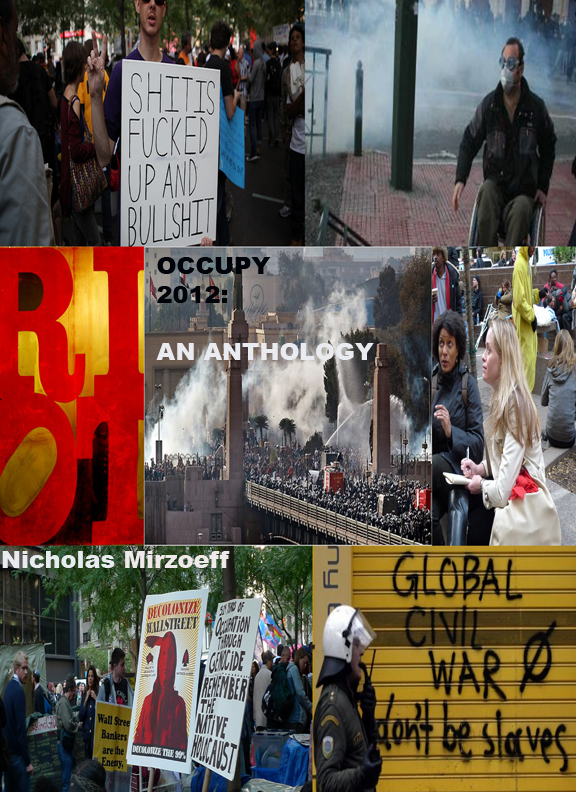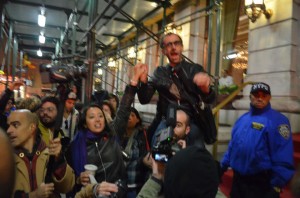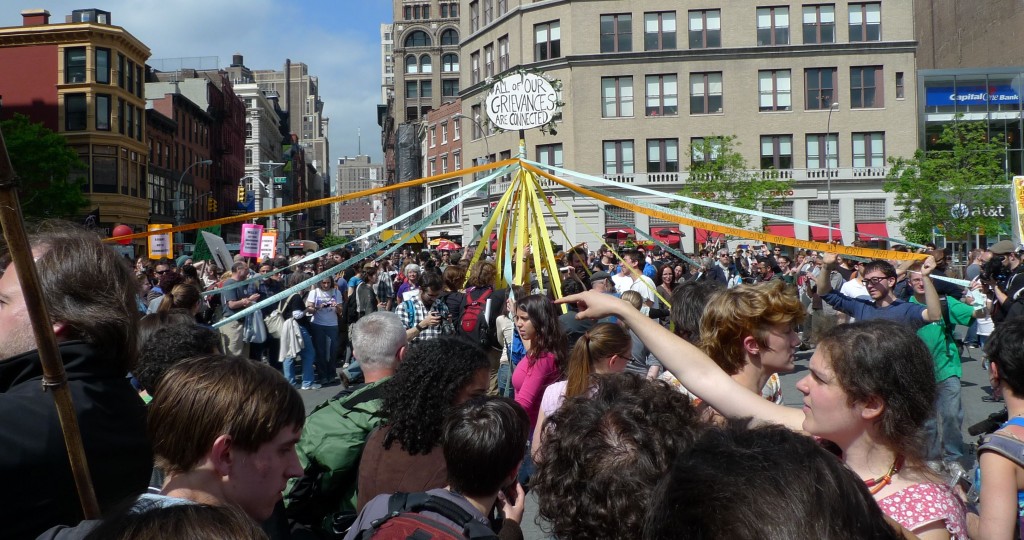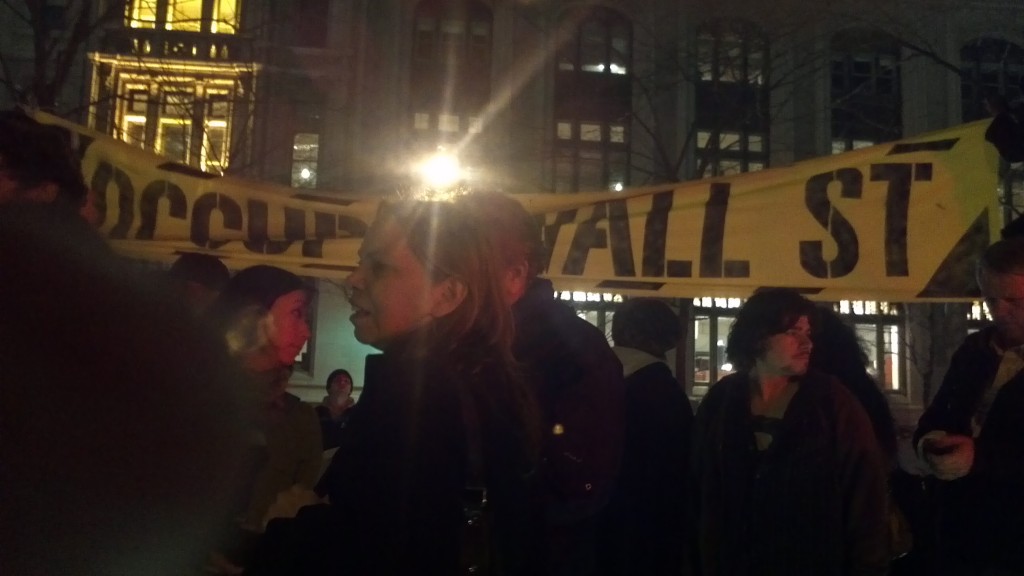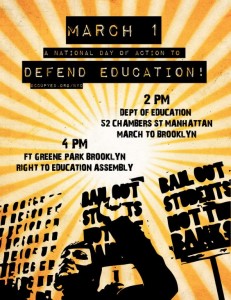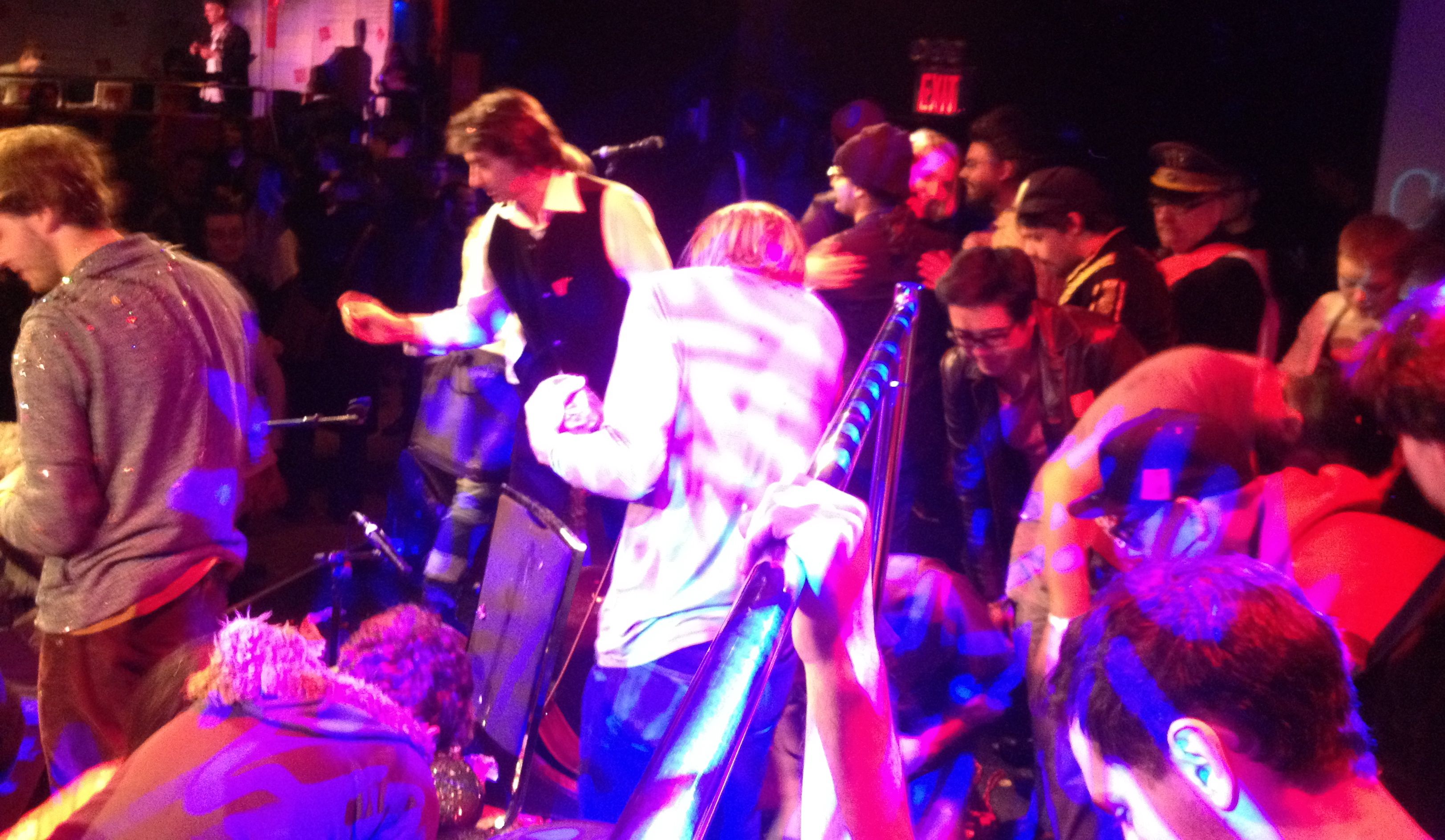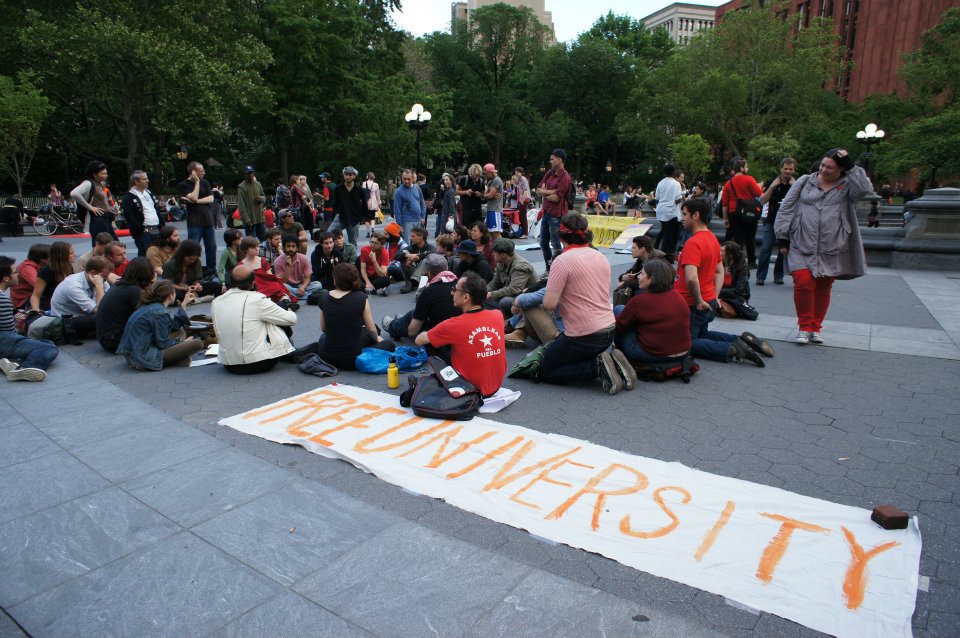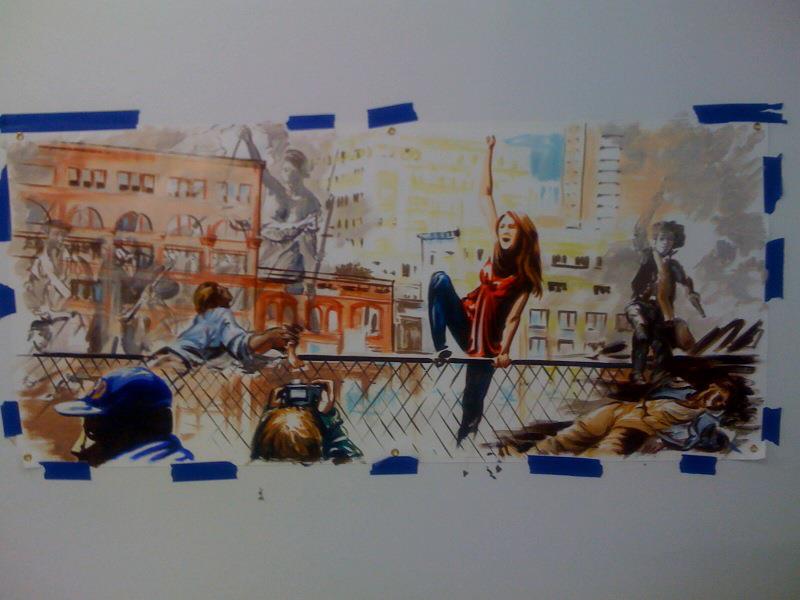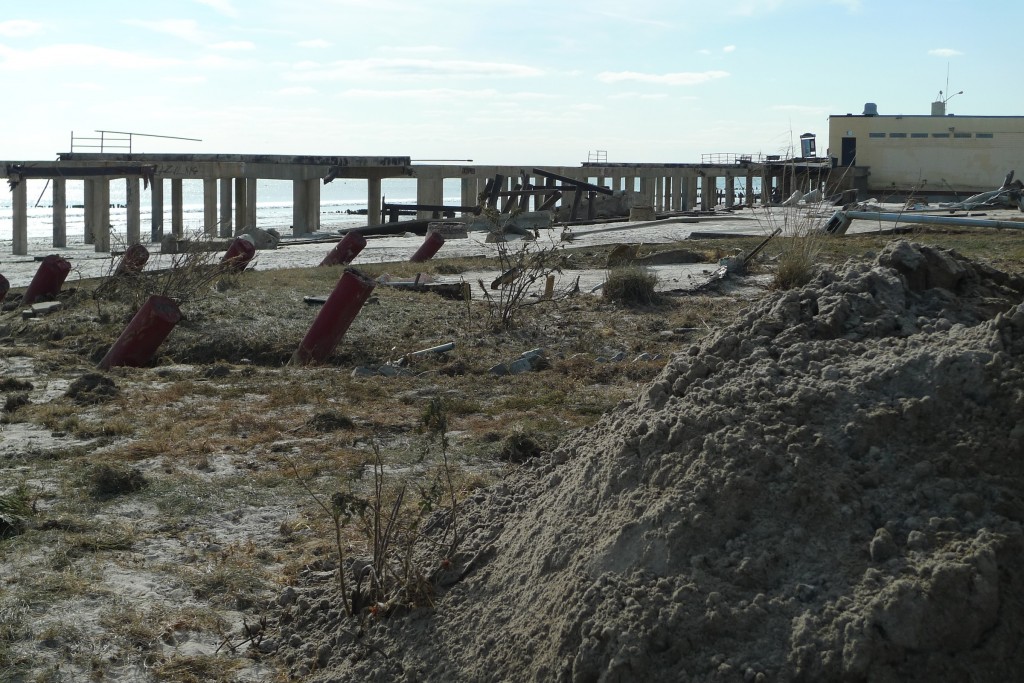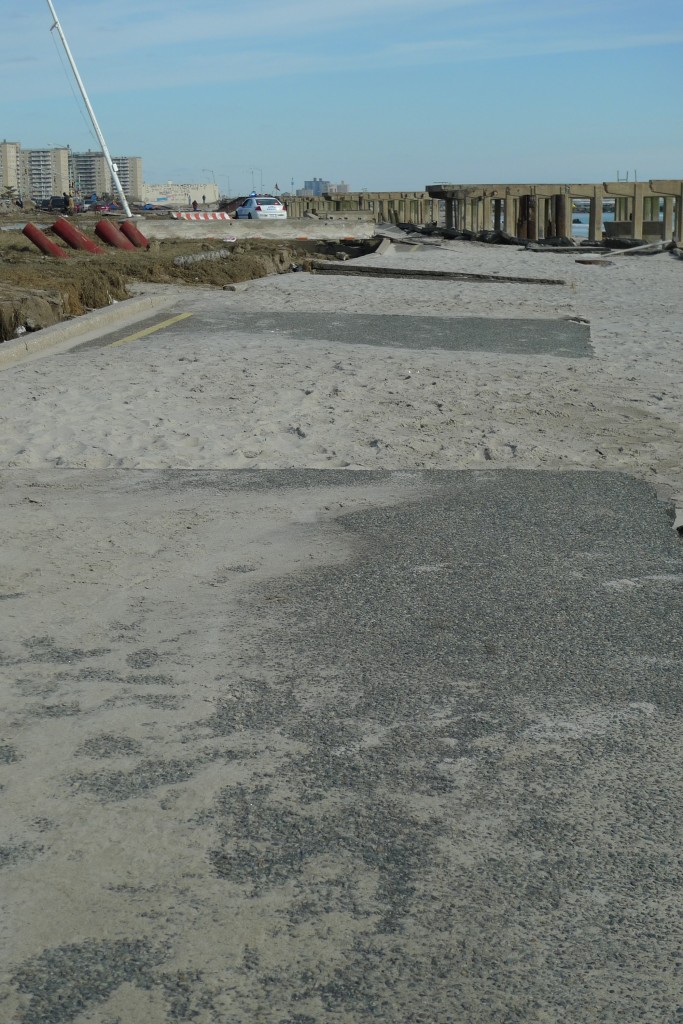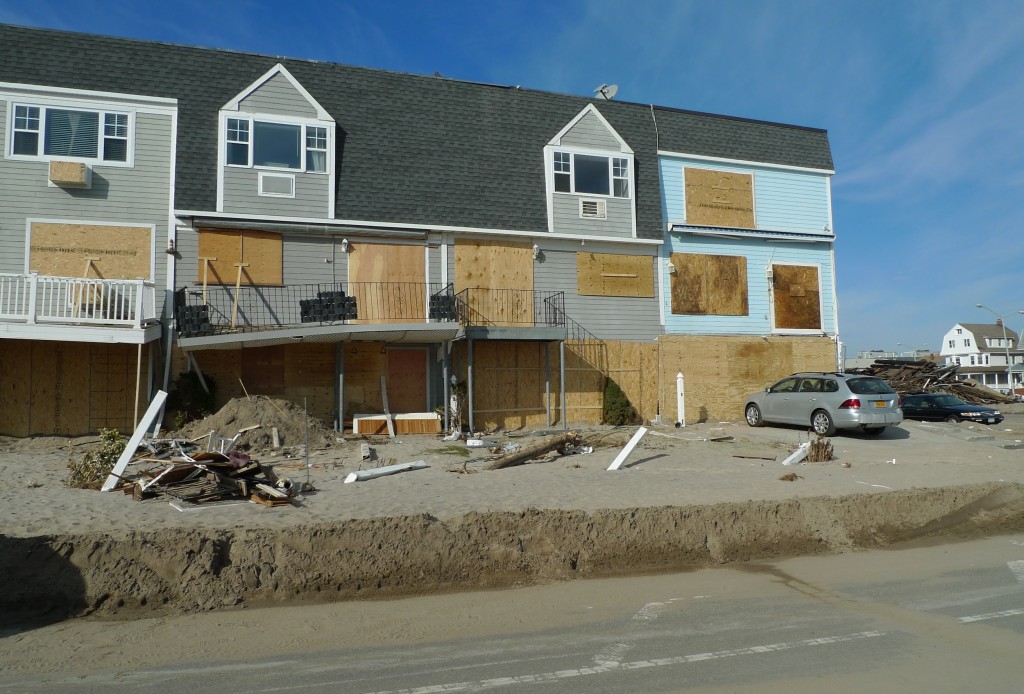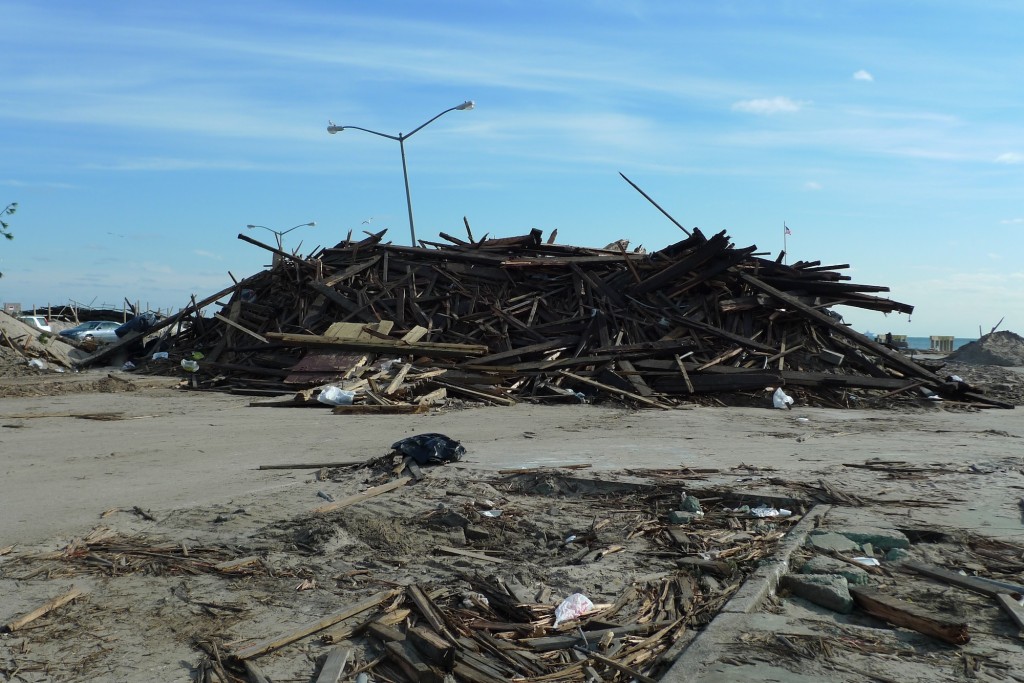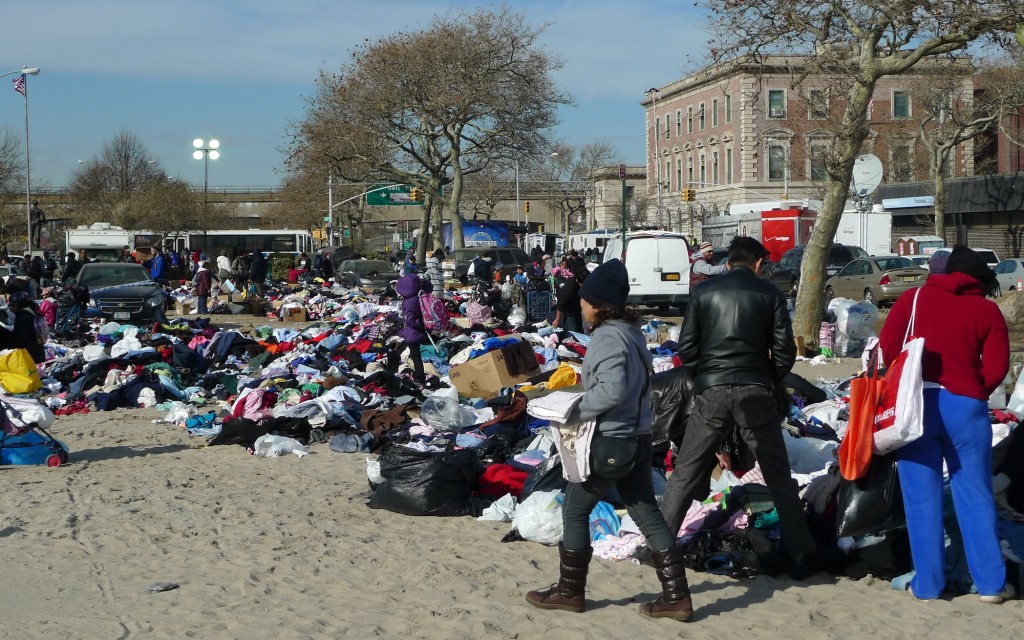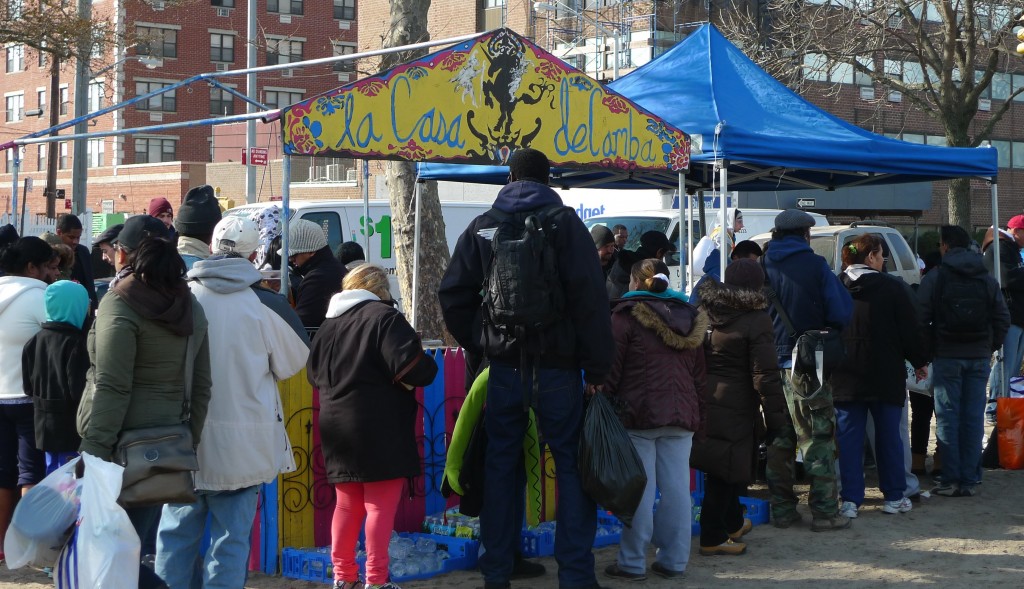How do we learn from change? How do we learn to change? These repeated but slightly different questions seem at the heart of the emerging difference between the academic assessment of the Occupy movement and its own internal process. Today Critical Inquiry published three intriguing essays about Occupy, written about the 2011 moment. Yesterday, I learned a good deal from Occupy University about how to create a successful “learning encounter.” The two are noticeably different and yet intersect.
The Critical Inquiry pieces (paywall protected) are by W. J. T. Mitchell, Michael Taussig and Bernard Harcourt. All distinguished figures to be sure, an amazing team to have backing Occupy, yet all three are white men of a certain age (as is acknowledged). While each essay movingly describes, and often quotes, the experiences of students and occupiers, it’s a shame that at least one of these people wasn’t given space to report back for themselves.
It’s not at all that the writers are not aware of the dilemma of doing academic work about Occupy. For Mitchell, one problem was simply that
it threatens to drown the researcher under a tsunami of material.
Anthropologist Michael Taussig resolved that issue by writing a moving account of last O13, the first attempt to evict OWS that failed because so many turned up to support the occupation. Yet even the span of one night raises difficult questions:
So how do you write about it? In such circumstance of dissolving norms, effervescent atmosphere, invention and reinvention, what happens to the ethnographer’s magic—as Bronislaw Malinowski called it—and that old standby of “participant observation”?
Is that magic strong enough?
Am I clear here? I don’t think so, and I think this is the problem of writing surprise and writing strangeness, surely the dilemma and sine qua non of ethnography. As soon as you write surprise—or, rather, attempt to write it—it is as if the surprise has been made digestible, so it is no longer surprising, no longer strange.
Each writer has interesting and provocative ideas: Mitchell saw Occupy as a new iteration of the revolution as “empty space,” as proposed by Michelet. Harcourt sees it as a new phenomenon he calls “political disobedience” that “resists the very way in which we are governed.” Taussig understands the mic check as a way to “come to grips with trauma,” using “the cultic expression of magic,” reminding me of Rebecca Solnit’s description of the occupations as a response to disaster.
There is for all that a certain tension in finding a place for what Occupy has tried to do within the established forms of academic practice. There is a seemingly deliberately retro list of theoretical references –Hannah Arendt, Walter Benjamin, Heidegger, Nietzsche. In short, all the Very Serious Germans–plus Foucault. But no Marina Sitrin, David Graeber, Rebecca Solnit, Zapatista writings and so on. Thus the diligent sub-editors at the University of Chicago changed Harcourt’s “stack takers,” the organizing of people to speak at a meeting, into “stocktakers,” a commercial counting of inventory.
Theory, in the American university, now serves as authority. It brooks no gainsaying other than more theory in response. Occupy has tried to resist authority and to be a leaderless movement. Bernard Harcourt, the legal scholar, takes this problem seriously and gets it right when he says:
[T]hose who theorize the Occupy movement—anyone who is trying to understand the movement, as I am here—cannot speak with authorial voice on behalf of or for the movement, since they are, at the moment, outside the movement.
What, then is the “author” who is part of the claim to authority to do?
Occupy University have been working on this for the past year. When I had the pleasure of doing a learning encounter with them yesterday, I saw a number of ways in which they have brought movement practice into the practice of learning. In this format, while there is a speaker in the conventional way, time is not limited to the standard hour. After I spoke to some images, we sat in a circle and a facilitator took over the discussion.
The facilitator controlled the flow of conversation and I was allowed to step back, rather than engage in the standard Q and A. The practical result was that this part of the evening, usually a test of the speaker’s authority in academia–can they withstand the questions or not?–became the main event. It took most of the time and generated more of the ideas and all the discussion. By the end, there was a joint ownership of the topics under discussion. I know this sounds a bit idealized, but it really was my sense of what happened.

Women in Kashmir burning their electricity bills, 10-18-12
As a result, the conversation was more interactive and engaged than is often the case in academia. Several reasons for this engagement seemed clear. It was a very diverse group, especially in terms of national origin, which allowed for a range of perspectives on debt and the global social movements, rather than referring mainly to OWS. At the same time, people active in the movement here used the encounter to be self-reflexive and critical of their own practice. When there was an opportunity to speak, care was taken to see if someone who had not yet spoken might want to do so. What began a little hesitantly opened up into a space in which Bedouin, German, Palestinian and Indian experience was being cross-referenced.
There were those who touched on theory–Jameson and Rancière for cognitive mapping and the division of the sensible respectively–but I really felt something else was emerging here. This was not a naive or unschooled room of people, in an art foundation in Manhattan. But there was a sense that we were trying to reach a little further, not to score points, but to learn how to learn. I got too involved in following and listening to take proper notes. And that in itself reminded me of being in the park in the first days that the Critical Inquiry team were writing about, when for a long time, I just wanted to be there and be part of it.
Like this:
Like Loading...

